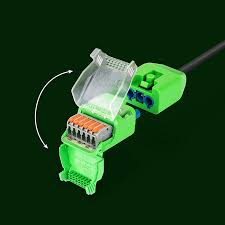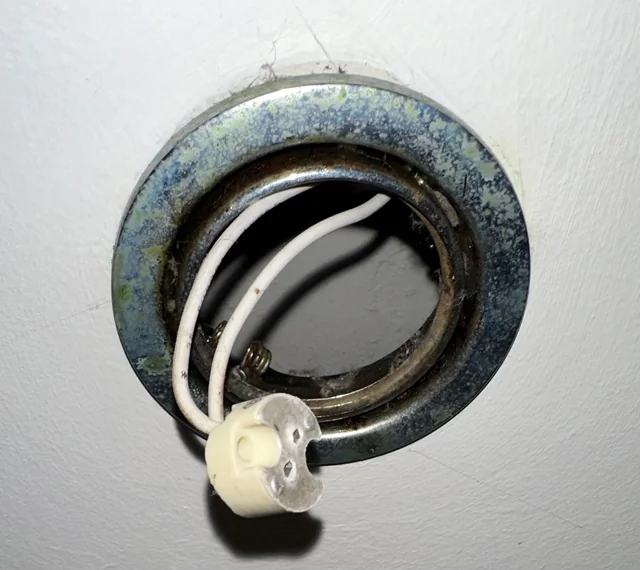The Hidden Dangers of Old Downlight's – Why You Should Upgrade
- cdaws35

- Feb 20
- 4 min read
Updated: Mar 7

Downlight's are a popular home lighting choice in many homes, offering a sleek and modern aesthetic. However, as an electrician working in Newcastle, I’ve come across countless old downlight's that pose serious safety risks due to poor installation and outdated components. The truth is, many older downlights could be a hidden fire hazard, and most homeowners are completely unaware of the dangers lurking in their ceilings.
In this post, I’ll explain the common risks associated with old downlight's, the importance of upgrading to modern LED alternatives, and how making the switch can enhance your home’s safety and efficiency.
*The modern LED downlight; JCC X50 (our view, the best on the market)
🔥 The Fire Risk of Old Downlights
Many downlights installed 20+ years ago were fitted with halogen bulbs, which generate intense heat—much more than modern LED equivalents. Over time, this heat can scorch surrounding materials, particularly if the downlighters are not fire-rated or are covered with loft insulation.
Key Fire Hazards of Old Downlights:
• Non-Fire-Rated Downlights 🔥 – Many older fittings do not comply with modern fire safety regulations. Fire-rated downlights are designed to contain a fire and prevent it from spreading between floors.
• Overheating Halogen Bulbs 💡 – Halogen bulbs operate at significantly higher temperatures than LEDs, increasing the risk of heat damage and fire.
• Loft Insulation Contact 🏡 – In older installations, insulation is often placed directly over downlights, trapping heat and potentially igniting flammable materials.
• Downlights Installed Against Wooden Joists 🪵 – I frequently come across old downlighters installed touching or too close to wooden ceiling joists. The heat from halogen bulbs can dry out and char the wood over time, increasing the risk of ignition and fire.
*Downlight heat damage, non fire-rated loft downlight & non IP rated bathroom downlight
Why Modern LED Downlights Are Safer:
✅ Fire-rated to prevent the spread of fire through ceiling cavities.
✅ Minimal heat output compared to halogen bulbs.
✅ Designed to work safely with loft insulation, reducing fire risk.
✅ Proper installation standards ensure safe spacing from combustible materials.
⚡ Electrical Hazards – Poor Connections & Shock Risks
Another alarming issue I frequently encounter is dangerous wiring and loose connections in older downlight installations. Many were installed using basic plastic connector blocks, which degrade over time and can lead to arcing, short circuits, and even electrical fires.
*Downlighter with poor exposed connections vs correct enclosed connections
Common Electrical Issues:
• Exposed Live Wires ⚡ – Many old downlights were wired without proper enclosures, leaving live connections exposed in loft spaces or ceiling cavities.
• Loose Terminations 🔩 – Over time, wires in outdated connector blocks can loosen, leading to flickering lights, power failures, or even electrical fires.
• No Protective Enclosure 🚧 – Modern downlights come with sealed connectors, whereas older versions often leave cables unprotected.
• Unearthed Metal Downlights ⚠️ – Some older downlighters, particularly those with metal casings, were installed without an earth connection. This creates a significant risk of electric shock if someone touches the metal casing—such as when changing a bulb—while a fault is present.
How Modern LED Downlights Solve These Problems:
✅ Secure, enclosed cantilever connector blocks ensure firm, lasting connections.
✅ Reduced risk of electrical arcing, flickering, and overheating.
✅ Fully compliant with modern electrical safety regulations.
✅ All metal downlighters are properly earthed, reducing the risk of shock.
*Non fire rated downlight vs modern LED downlight
🚿 Water Ingress in Bathrooms – A Hidden Shock Hazard
Bathrooms are one of the most dangerous places for poorly installed downlights. In many older homes, I find downlight's that aren’t properly sealed, allowing moisture to seep into the electrical components.
Risks of Old Downlighters in Bathrooms:
• Not IP-Rated 🛁 – Many older fittings don’t meet the required IP (Ingress Protection) rating, making them unsafe in damp environments.
• Increased Risk of Electric Shock ⚠️ – Moisture exposure can lead to short circuits, posing a serious risk of electric shock.
• Corrosion of Wiring & Fittings 🏚️ – Over time, exposure to humidity can damage electrical components, leading to failures or potential hazards.
Why Modern Bathroom Downlight's Are Safer:
✅ IP65-rated for protection against moisture and steam.
✅ LED technology reduces heat buildup, minimizing damage over time.
✅ Sealed fittings prevent water ingress, keeping electrical components safe.
💡 The Benefits of Upgrading to Modern LED Downlights
Replacing outdated downlights is not just about safety—it also offers a range of practical benefits:
• Energy Efficiency 🌍 – LED downlights use up to 90% less energy than halogen bulbs, slashing your electricity bills.
• Longer Lifespan ⏳ – Modern LED downlights can last up to 25,000 hours, compared to the 2,000-hour lifespan of halogens.
• Better Light Quality 🌟 – LEDs provide brighter, more consistent lighting while offering dimmable and smart home-compatible options.
• Eco-Friendly 🍃 – Reduced energy consumption means a lower carbon footprint, benefiting both your wallet and the planet.
🔎 Do You Have Old Downlight's in Your Home?
If your home has downlight's installed over 15-20 years ago, there’s a good chance they pose a safety risk. Don’t wait until a problem arises—schedule an inspection to ensure your lighting is safe, efficient, and compliant with modern standards.
At Great Park Electrical, we install high-quality, fire-rated LED downlights that enhance safety, energy efficiency, and aesthetics. Get in touch today for an assessment and upgrade your home lighting with confidence!
📞 Call us today or request a free quote!
_edited.png)















Comments